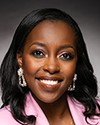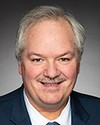Yes. Thank you so much, Laila.
Obviously, Breast Cancer Canada would like to see the age lowered to 40 for all the reasons that both the doctors recommended. I think at the age of 40, although women can make up their mind, it is about that prompt. This is what we hear from the patients every day. They say they got the letter in the mail, or their doctor said they now qualify, and then they went and had that mammogram done. It catches something at a very early stage. We speak to those patient advocates on a daily basis and we hear that frequently.
In terms of providing them with the opportunity to be screened at the age of 40, and certainly profiled as to whether they should even be screened at a younger age because of family history, we would definitely be advocating for that and for asking the task force to please lower that age to 40.
Certainly, when we have more technology available in the future, we'll have a better opportunity to offer more technology and more treatment options for women at a younger age.




